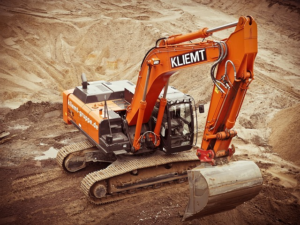
The number of zero-emission truck and bus models on the market will grow by 26% from 2020 until the end of 2022, according to data released by clean transportation technology provider Calstart on Wednesday. Calstart updated its Zero Emission Technology Inventory (ZETI) tool as part of its Drive to Zero program.
The 26% increase from 433 to 544 models of zero-emission trucks and buses gives companies more options to choose a sustainable vehicle that suits their needs.
A large portion of that increase in model availability comes from medium- and heavy-duty trucks. Between 2020 and the end of 2022, the number of heavy-duty truck models will increase by 56%, and medium-duty truck models will increase by 48%, Yin Qiu, data scientist at Calstart, said during a press briefing.
Calstart defines zero-emission vehicles (ZEVs) as vehicles that have zero tailpipe emissions, so it includes battery-electric vehicles and hydrogen fuel cell vehicles.
Drive to Zero, ZETI tool
Drive to Zero is a multi-stakeholder partnership program that aims to accelerate the deployment of zero-emission commercial vehicles, with a focus on the heavy-duty sector. The program also recognizes the disproportionate impact these vehicles have on fuel consumption and related emissions despite being a small percentage of the global fleet, Owen MacDonnell, project manager at Calstart, said during the briefing.
Calstart’s ZETI tool provides information about ZEVs that are on the market right now. It tracks metrics such as vehicle range, battery capacity, and when and where the vehicles will become available.
“Ranges for zero-emission trucks are improving over time with battery technology advancements,” Qiu said. “Heavy-duty trucks are now available with more variety and improved performance.”
The medium range for heavy-duty trucks is 186 miles, according to Calstart data. Qiu said this range should be able to serve the medium-range trucking sector, where a typical truck travels 150 miles and returns to base every day.
Based on feedback, Calstart updated ZETI so users can now compare three ZEV models within a region at one time. Users can also toggle between battery-electric and hydrogen fuel cell vehicle models if they have a preference. If a vehicle qualifies for an incentive program in states such as California or New York, it is now shown on the ZETI tool.
Barriers to ZEV adoption
Charging infrastructure, vehicle range, higher upfront cost, battery lifetime and resale value are concerns that many trucking companies have when they think about adopting ZEVs.
A barrier holding back adoption rates is the current speed of charging infrastructure installation, said Patrick Duan, senior vice president of operations of the North American branch of Chinese manufacturing company BYD. “It’s extremely important [to have] collaboration and cooperation among multiple parties to work together to get the charging infrastructure.”
Similarly, freight companies will have to work with utilities to ensure the grid can handle higher electricity demands. Getting more renewable energy online could help reduce this stress, said Peter Forsberg, head of e-Trucks Solutions at Swedish commercial vehicle manufacturer Scania.
Benefits of shifting to ZEVs
The experts agreed that building on increasing momentum in ZEVs and charging infrastructure will create new business opportunities. Another reason for OEMs and freight carriers to switch to ZEVs is to reduce greenhouse gas emissions and limit the impacts of climate change.
“Scania strongly supports accelerating the shift towards sustainable transport. Electrifying heavy commercial transport is key to limiting the worst impacts of climate change in the coming decades,” Forsberg said. “Scania now offers a wide range of fully electric vehicles, and we are testing fully electric trucks in operations, like heavy and long-distance transport, that were very recently considered out of reach for electrification.”
As policymakers and large companies such as DHL get behind ZEVs, both OEMs and smaller freight companies gain confidence in the transition.
“I think there is a lot of optimism around the increasing ability of many of these trucks,” MacDonnell said. He said it’s important to focus on the use cases in which different models of ZEVs can be deployed effectively today.
Duan said, “This is a very exciting moment to be working in this zero-emission, electrification world.”
Click here for more FreightWaves articles by Alyssa Sporrer.
Related Stories:
Solar panels to help charge batteries on 67 DHL Express trucks
Women In Trucking names 3 Driver of the Year finalists
Transfix ESG report: Digital platform helping reduce waste in freight
Report: Zero-emission truck deployment ‘quite low’ but ramping up
Register today for the Future of Supply Chain #FOSC22
The leading voices in supply chain are coming to Rogers, Arkansas, on May 9-10.
*limited term pricing available.


